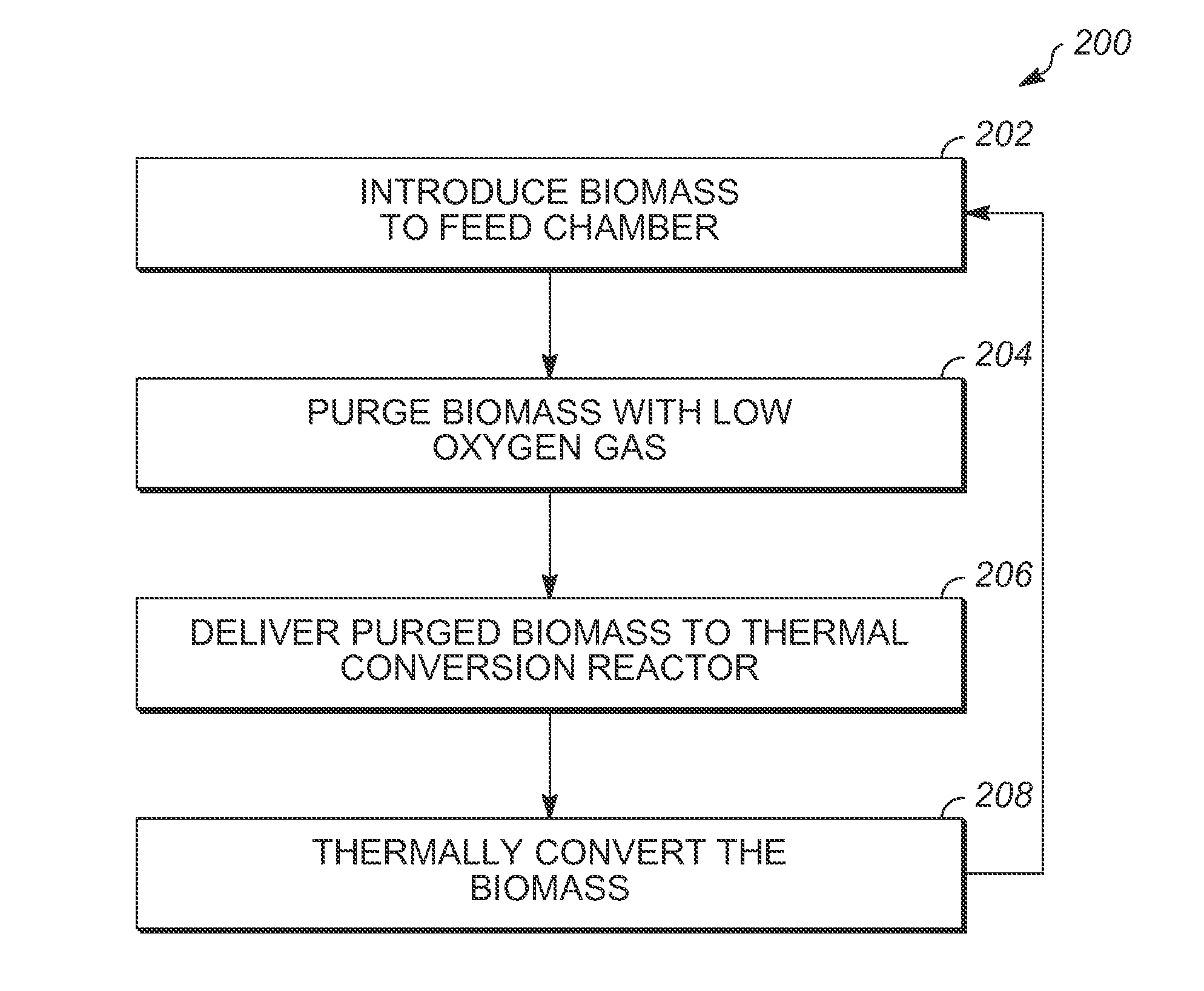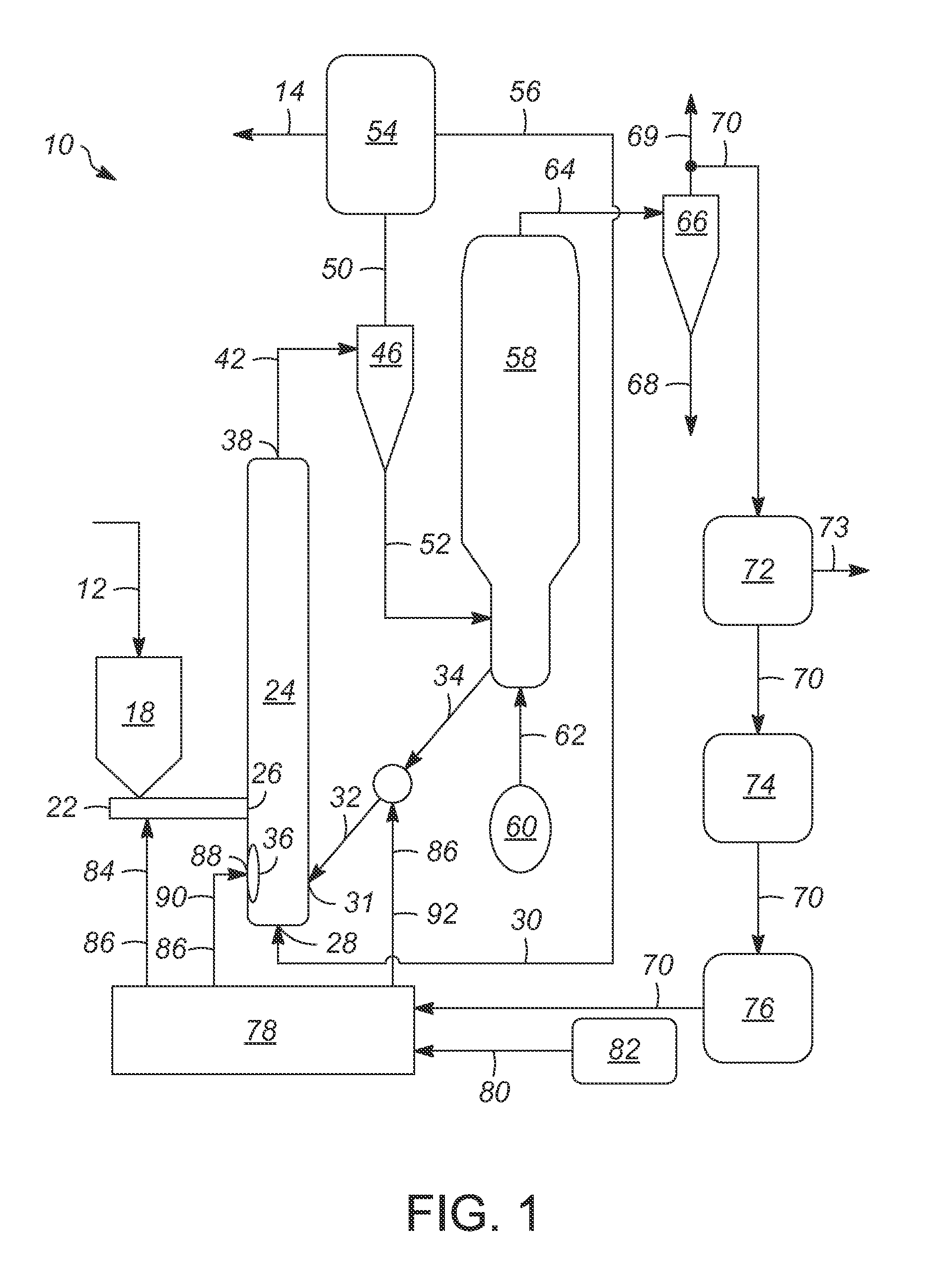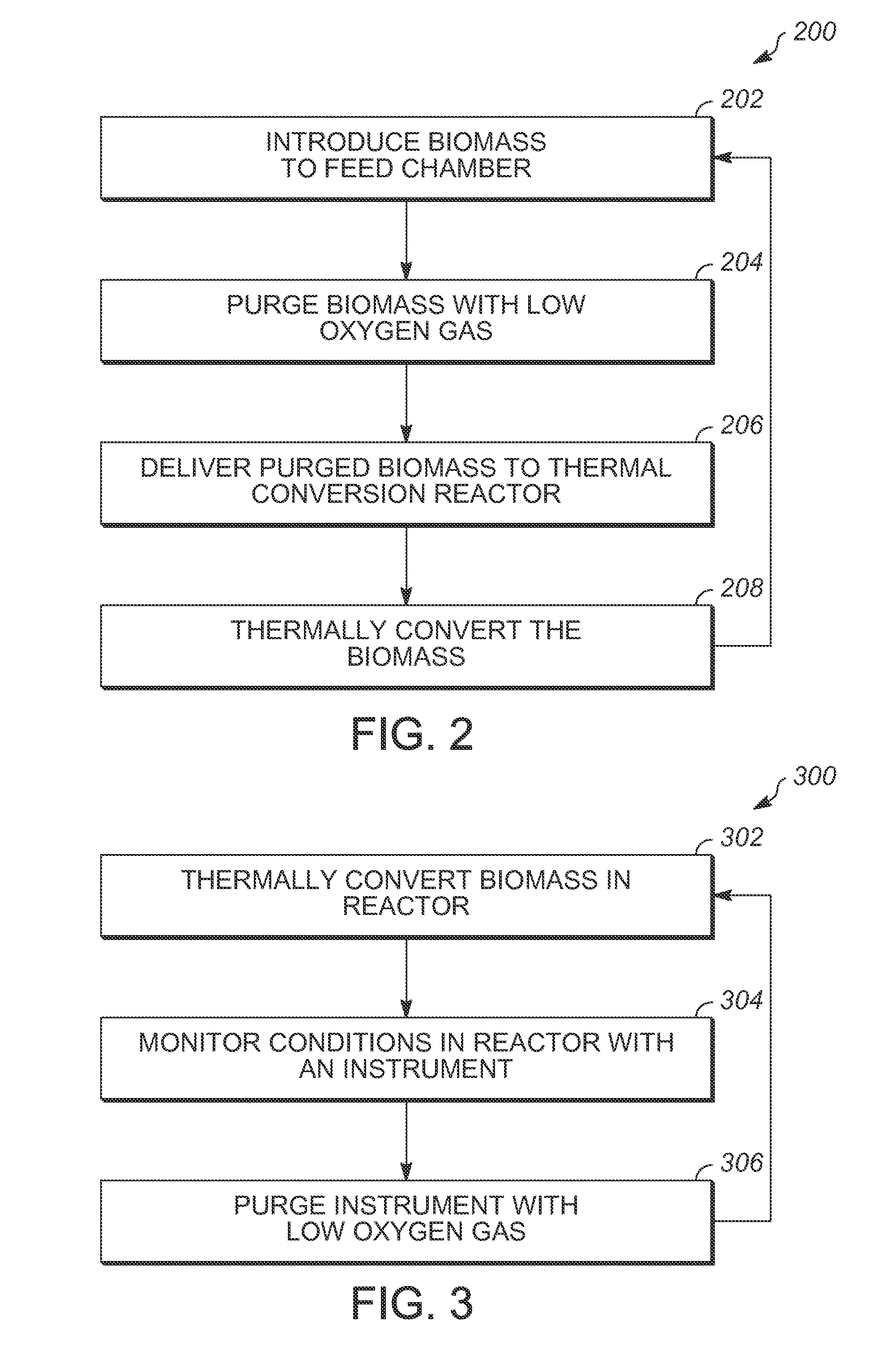Methods and apparatuses for thermally converting biomass
a technology of thermal conversion and biomass, applied in the direction of biofuels, biofuels, products, etc., can solve the problems of reducing the yield of pyrolysis oil proportionally to the amount of oxygen added, and typical thermal conversion units exhibit up to about 2% liquid yield loss
- Summary
- Abstract
- Description
- Claims
- Application Information
AI Technical Summary
Benefits of technology
Problems solved by technology
Method used
Image
Examples
Embodiment Construction
[0016]The following detailed description is merely exemplary in nature and is not intended to limit the methods and apparatuses for thermally converting biomass. Furthermore, there is no intention to be bound by any expressed or implied theory presented in the preceding technical field, background or brief summary, or in the following detailed description.
[0017]It is contemplated herein that the thermal conversion of biomass can be improved under conditions in which oxygen levels are controlled at selected levels. Specifically, the methods and apparatuses for thermally converting biomass described herein can be used to limit the volume of oxygen introduced to a thermal conversion reactor. Conventional thermal conversion processes utilize a carrier gas having a desired oxygen level, such as no more than about 5 vol %, which enters the thermal conversion reactor and carries the biomass through the thermal conversion reactor during the thermal conversion reaction. However, in the conve...
PUM
| Property | Measurement | Unit |
|---|---|---|
| pressure | aaaaa | aaaaa |
| temperatures | aaaaa | aaaaa |
| temperature | aaaaa | aaaaa |
Abstract
Description
Claims
Application Information
 Login to View More
Login to View More - R&D
- Intellectual Property
- Life Sciences
- Materials
- Tech Scout
- Unparalleled Data Quality
- Higher Quality Content
- 60% Fewer Hallucinations
Browse by: Latest US Patents, China's latest patents, Technical Efficacy Thesaurus, Application Domain, Technology Topic, Popular Technical Reports.
© 2025 PatSnap. All rights reserved.Legal|Privacy policy|Modern Slavery Act Transparency Statement|Sitemap|About US| Contact US: help@patsnap.com



